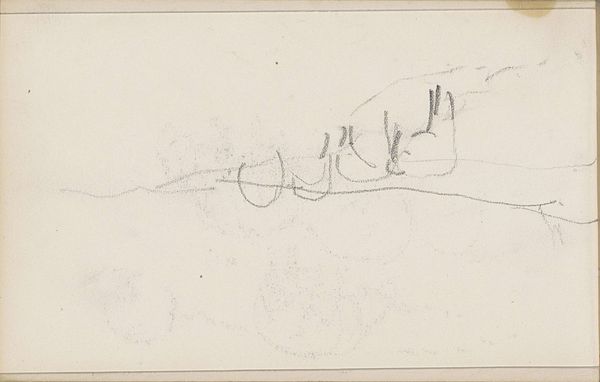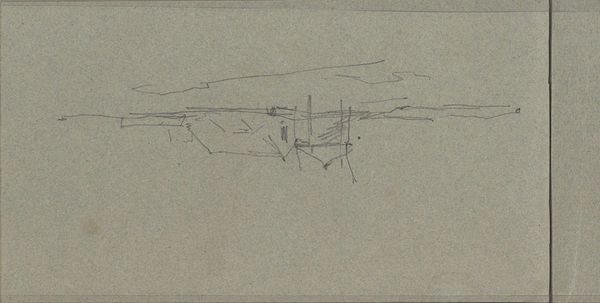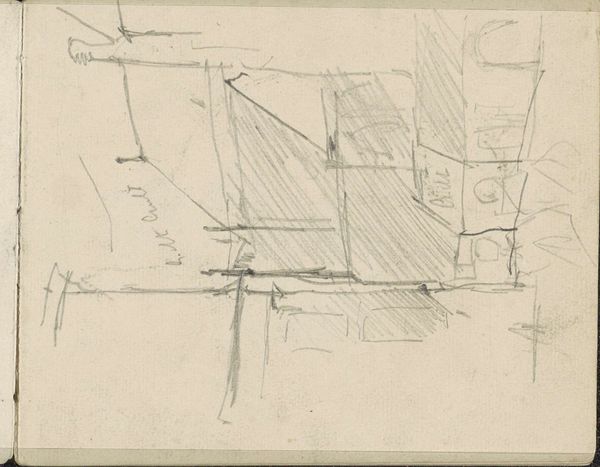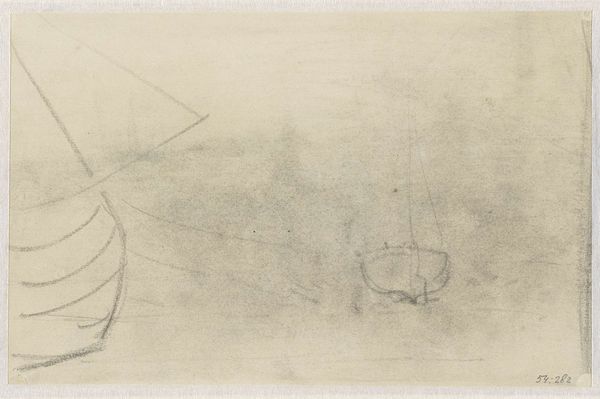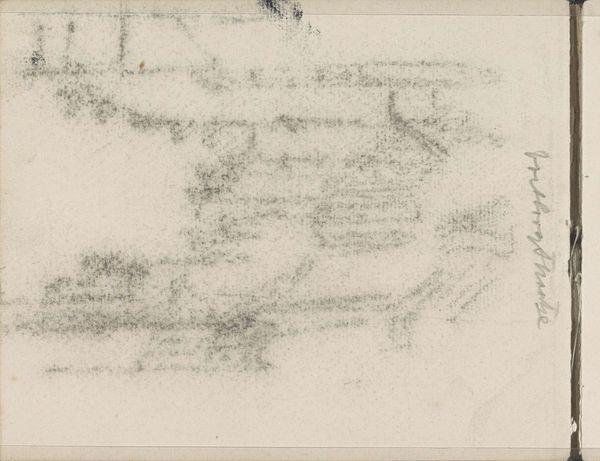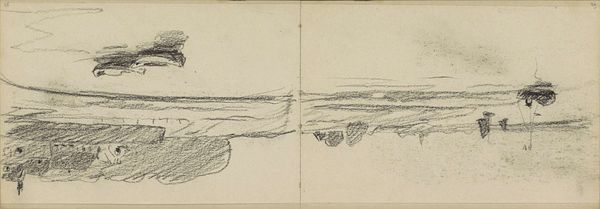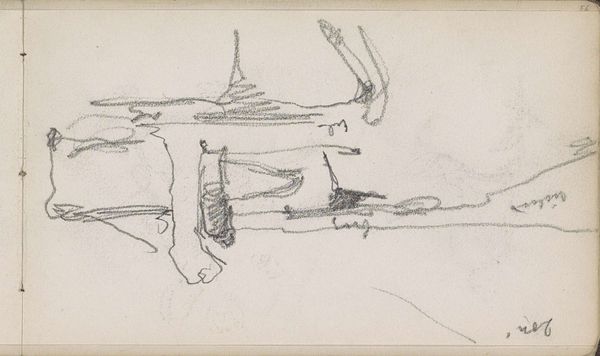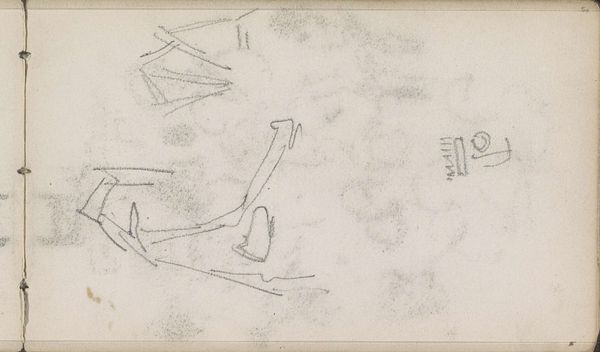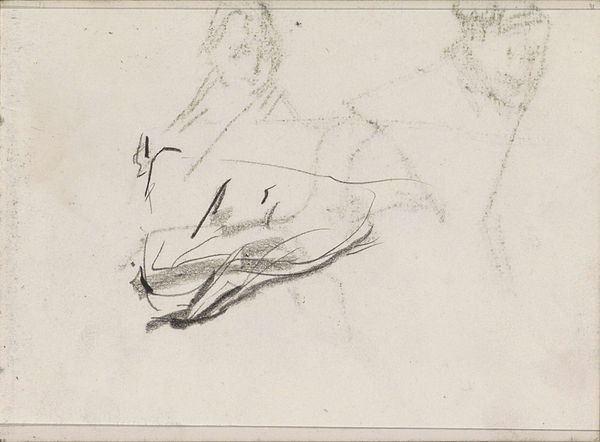
#
amateur sketch
#
light pencil work
#
pencil sketch
#
incomplete sketchy
#
hand drawn type
#
personal sketchbook
#
ink drawing experimentation
#
pen-ink sketch
#
sketchbook drawing
#
sketchbook art
Copyright: Rijks Museum: Open Domain
Curator: Before us is "Studie," a drawing by George Hendrik Breitner, created sometime between 1886 and 1890. It’s part of the Rijksmuseum collection. Editor: My initial response is one of quiet observation. The barest whisper of lines suggests form, like a half-remembered dream. The lack of clear definition forces you to construct the scene yourself, doesn't it? Curator: Indeed. Note how Breitner uses extremely economical lines to delineate forms. The composition is all about suggestion rather than declaration. It’s a study in the purest sense: an exercise in capturing the essence of a subject. Editor: I see a suggestion of a figure – or perhaps multiple figures? They seem veiled, ghostly almost. Considering the period, one could imagine the figures representing the rising urban underclass or perhaps even repressed societal anxieties visualized in the artist’s line work. Curator: That’s a compelling reading, especially given Breitner’s reputation as a painter of modern urban life. However, formally, observe the negative space. The areas untouched by pencil are just as crucial to the composition as the drawn lines. They give breath, allowing the sketch to remain light and airy despite its potentially heavy subject matter. The diagonal slashes create the sensation of dynamic tension which is in contrast to the more defined, though still soft, figures. Editor: Yes, there is definitely that interplay between shadow and light; solid and etherial that lends itself to social narratives – the hazed other, obscured realities made barely visible to the bourgeois. Even Breitner’s medium is speaking to me of social impermanence. The sketchbook becomes like a window into an unseen moment that can only exist for an instant. Curator: Fascinating. It highlights the dichotomy that exists in his studies which often portray transient subjects and evoke an ineffable yet poignant emotionality. It's a wonderful glimpse into the artist’s process. The very sketchiness, in my eyes, lends itself perfectly as a mode of seeing the new rapid shifts in everyday experience within Europe during Breitner's life. Editor: Well, regardless of exact interpretations, it certainly ignites one's imagination. It is precisely in what it omits that it empowers. Curator: I agree. An unassuming study becomes a rich tableau of ideas, style, and history!
Comments
No comments
Be the first to comment and join the conversation on the ultimate creative platform.

